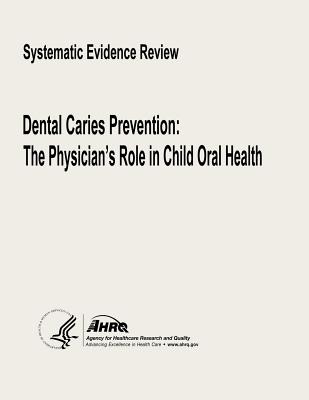Issues of oral health in children revolve almost exclusively around dental caries. In the U.S., dental caries is the most common chronic childhood disease, and its treatment is the most prevalent unmet health need in children. A substantial portion of caries lesions can be prevented; indeed, the incidence of this disease has declined among school-age children and adults in the past three decades. However, incidence among preschool children has not declined at a similar rate over this same time period. Dental caries is an infectious disease that can occur when cariogenic bacteria colonize a tooth surface in the presence of dietary carbohydrates, especially refined sugars. The bacteria metabolize the carbohydrates, producing lactic acid, which over time demineralizes the tooth structure. The earliest visible manifestation of dental caries is the appearance of a demineralized area on the tooth surface, which presents either as a small white spot on a smooth surface or a pit or fissure. At this stage, a caries lesion is usually reversible. If oral conditions do not change, demineralization will continue with the eventual result that the tooth surface loses its natural contour and a "cavity" develops. At this stage, restorative treatment is necessary to prevent the continuation of the caries process, which if left untreated will eventually result in pulpitis and ultimately tooth loss. Progression of individual caries lesions is typically slow, but it can be extremely rapid in a small proportion of individuals and especially in primary teeth, which have thinner enamel. Because dental caries is a chronic disease of microbial origin, modified by diet, the elimination of active caries lesions through treatment does not necessarily mean that the disease has been eradicated. An individual's risk for dental caries can change with time as etiologic factors change, leading to new caries events around already treated lesions or on previously unaffected tooth surfaces. Dental caries in primary teeth can has both short- and longer-term negative consequences. Caries lesions often cause pain because they can progress rapidly in primary teeth and involve the pulp before they are either detected or treated. Regardless of their degree of progression, lesions cavitated into dentin require reparative treatment or tooth extraction; both are frequently traumatic experiences for young children. Young children with untreated, symptomatic carious teeth often present to emergency departments of hospitals for their first dental visit. Also, untreated caries lesions in young children may be associated with failure to thrive, although evidence is conflicting regarding this association Untreated caries typically is cited as leading to increased infections, dysfunction, poor appearance, and low self-esteem, but most of these associations stem from conventional wisdom rather than observational studies. Key Questions addressed include: 1. How accurate is PCC screening in identifying children ages 0 to 5 years who: (a) have dental caries requiring referral to a dentist? (b) are at elevated risk of future dental caries? 2. How effective is PCC referral of children ages 0 to 5 years to dentists in terms of the proportion of referred children making a dental visit? 3. How effective is PCC prescription of supplemental fluoride in terms of: (a) appropriateness of supplementation decision? (b) parental adherence to the dosage regimen? (c) prevention of dental caries? 4. How effective is PCC application of fluoride in terms of: (a) appropriateness of application decision? (b) achieving parental agreement for the application? (c) prevention of dental caries? 5. How effective is PCC counseling for caries-preventive behaviors as measured by: (a) adherence to the desired behavior? (b) prevention of dental caries?
| FindBook |
有 1 項符合
Dental Caries Prevention: The Physician’s Role in Child Oral Health: Systematic Evidence Review的圖書 |
 |
Dental Caries Prevention: The Physician’s Role in Child Oral Health: Systematic Evidence Review 作者:U. S. Department of Health and Human Services(COR)/ Agency for Healthcare Research and Quality (COR) 出版社:Createspace Independent Publishing Platform 出版日期:2013-06-28 語言:英文 規格:平裝 / 92頁 / 27.9 x 21.6 x 0.5 cm / 普通級 |
| 圖書館借閱 |
| 國家圖書館 | 全國圖書書目資訊網 | 國立公共資訊圖書館 | 電子書服務平台 | MetaCat 跨館整合查詢 |
| 臺北市立圖書館 | 新北市立圖書館 | 基隆市公共圖書館 | 桃園市立圖書館 | 新竹縣公共圖書館 |
| 苗栗縣立圖書館 | 臺中市立圖書館 | 彰化縣公共圖書館 | 南投縣文化局 | 雲林縣公共圖書館 |
| 嘉義縣圖書館 | 臺南市立圖書館 | 高雄市立圖書館 | 屏東縣公共圖書館 | 宜蘭縣公共圖書館 |
| 花蓮縣文化局 | 臺東縣文化處 |
|
|
圖書介紹 - 資料來源:博客來 評分:
圖書名稱:Dental Caries Prevention: The Physician’s Role in Child Oral Health: Systematic Evidence Review
|










